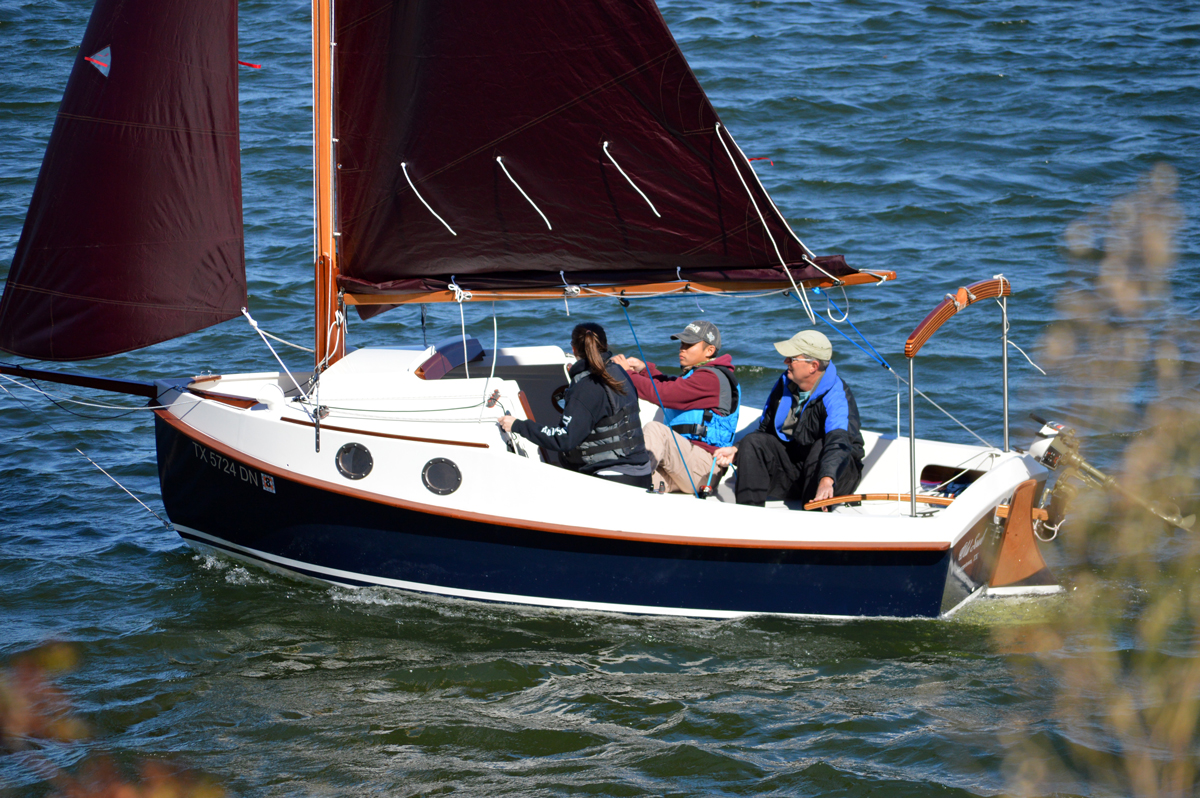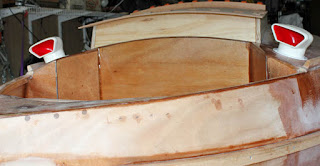 |
| Hull Bottom Fiberglass Cloth, Port Side |
I would very much like to put the cloth for the side panels on now and trim them, but I tried holding them in place with weights and they slid right off. It's going to be very difficult to get the panels overlapped and aligned properly on the still uncured bottom panels, but that's what I am going to have to do (others have managed, so I guess I can too). I could wait and add the side panels after the bottom panels are cured and sanded, but the bond is not nearly as good that way and this is a place where a good bond is important.
As I said it is too hot to do any of this now. We are supposed to have a fairly good cool-down on Saturday, so if that holds I plan to start the epoxy work at about 3 o'clock Saturday morning. That should enable me to get at least two coats on before it heats up too much--may be able to do three coats. It is imperative to get the second coat on while the first coat is still tacky, otherwise it would have to be sanded first and that can damage the cloth. If I can get a third coat on, all the better. After all that, I'll have to wait for the next cool spell to start painting. According the weather guy in Oklahoma City, we are supposed to have several cooler cycles this summer. I hope he's right!
In the meantime, I have started work on the electrics panel:
This panel will be hinged over an opening in the bulkhead forward of the cabin. Four of the eight switches on the upper right are for electronics and four for lighting. There are two 12V DC outlets and a voltmeter under the switches. (I decided to mount the main power switch in the bulkhead near the battery, instead of in the panel.) The white rectangle on the upper left is an AM/FM radio with USB input for MP3s. Below that is a VHF radio. I don't really need it on inland lakes, except to listen to the weather reports, but I may get a chance to sail on Lake Michigan later, where it could be a necessity. Besides, it looks cool!






















